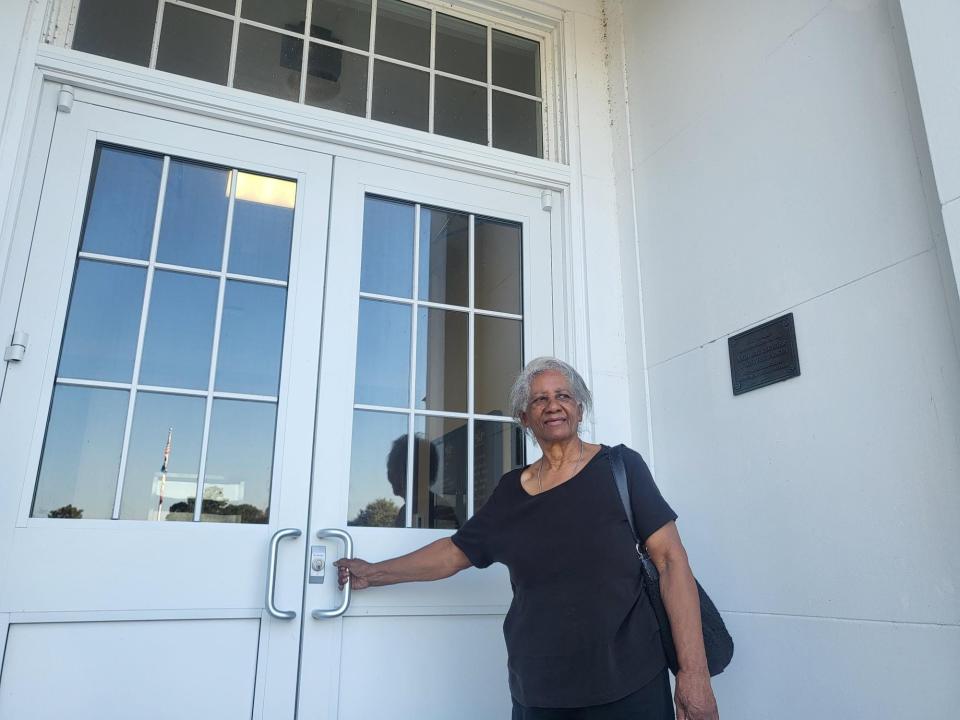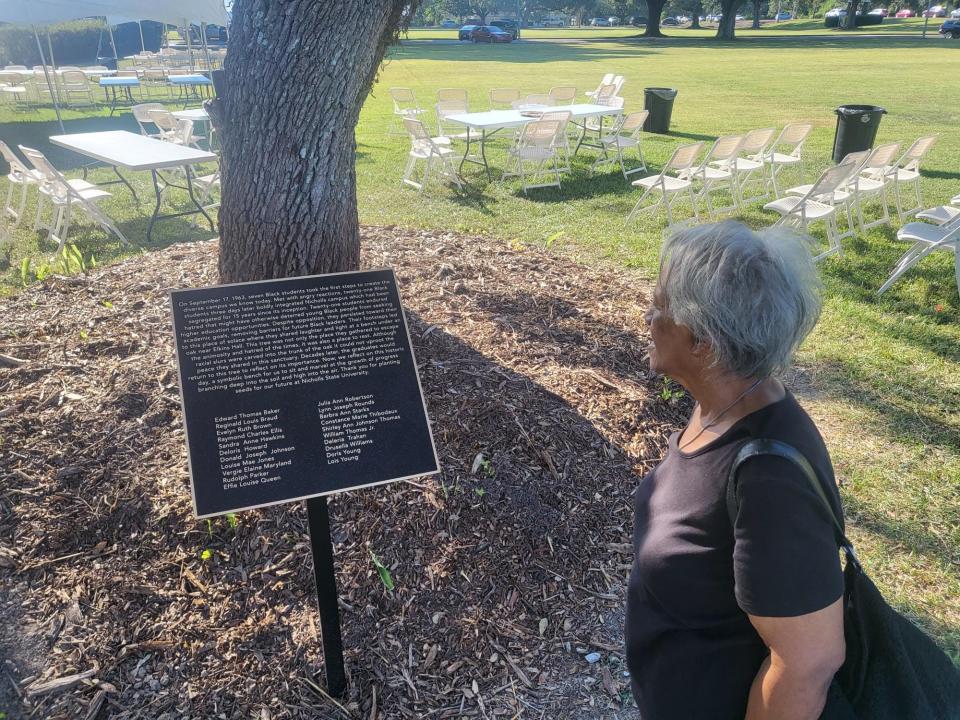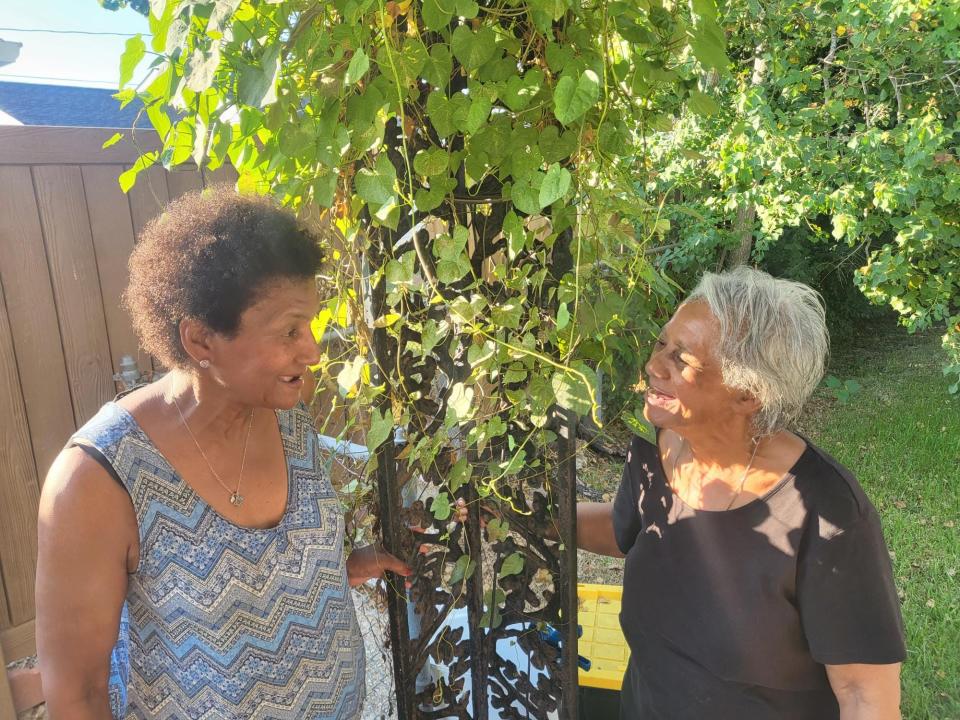The first 21 Black students to integrate Nicholls State University enshrined on plaque
The first 21 alumni to integrate into Nicholls State University were honored Sunday with a plaque enshrining their names at a spot on campus they considered a sanctuary.
Lois Young Blanchard, 79, and her sister, Doris Young, 78 integrated the university in September 1963. Their father, Wellington Young Sr., was asked if he'd be willing to allow the two to integrate, they said. From that day on, he would spend many sleepless nights sitting guard on the porch with a shotgun.
Lafourche Parish was being pulled into a new era, and these 21 students were some of the pioneers who endured the unpaved trail. The sisters were among the first seven to start the first day of school Sept. 17, 1963. They expected learning but repeatedly encountered hatred and epithets.
"They would say, '(racial slur) go home,'" Young said.
Blanchard's first incident was different but no more inviting.
"We walked in the classroom and they said, 'Oh, dark clouds are moving in here,'" she said.

According to Director of Communications Jerad David, school officials checked the registration records and counted 21 Black students who integrated that year. The sisters are adamant there was one more, Carl Evans, who started with them.
The plaque was a project pushed for by President of the Nicholls State University NAACP Timyra Cotton. It was funded by roughly $2,000 provided by the school's Student Government Association. There soon will be two benches added to the location, roughly $2,000 each, donated by Thibodaux Regional Health System and Alpha Kappa Alpha.
More: While change underway, Nicholls State University's name a reminder of Confederate past
More: The role of social media in Louisiana campaigns. It's not illegal but should you do it?
Cotton said the plaque was necessary to show the 21 former students that they were heroes for their perseverance.
"We appreciate all they've done for us," Cotton said. "On our campus and to me, they are famous. They are our celebrities. They are important, and we do appreciate them."
The location's significance was that the oak tree there was a meeting place where Blanchard and other students would gather to escape the verbal abuse. It was defiled twice. The tree and the bench that once stood there each had an expletive carved into them. The bench eventually was removed, and Blanchard could not find the word on the tree.

"It's big now. They took the thing off there, that word?," she asked, circling the trunk.
The tree has grown much in 60 years, and bark had covered its entire trunk.
Blanchard attended Nicholls for secretarial science, and Young was attending to become a teacher. Their first semester was paid for by the NAACP, and they paid for their second semester by working the field at a local sugarcane farm. Neither finished their degree, but both said the experience was rewarding.
Seated outside of Young's home in Thibodaux, the two recalled troubled moments from that past, which Blanchard described as feeling like a punch in the stomach. Asked if they regretted any of it, neither hesitated.
"Oh no, indeed not," Young said. "I just wanted to make sure the school got mixed, everybody go to school together, and it was just that time for integration to start. Martin Luther King (Jr.) was doing it, that's how I looked at it. We had to do it for our city, too."

The two said they just wish schools would invite people who experienced that past to meet with students and tell them about the experience. They said they are surprised when their grandchildren are shocked to hear about the resistance to integration.
"We'd sit in a Greyhound bus," Blanchard said. "We'd sit in the back, and they'd sit in the front. When you went to the Greyhound bus station, the Black people were on the other side. Even our doctor, when you went to his office, the Black people would sit in the front waiting room. People just can not believe that happened. Blows their minds."
Young said it may be for the best that the younger generation finds it hard to imagine people treating others that way, it would mean they've faced nothing like it, but she was concerned about that history not being taught or worse, taught inaccurately.
"It's not in the history books," Young said. "I think they should know."
This article originally appeared on The Courier: First 21 Black students to integrate Nicholls names enshrined on plaque

